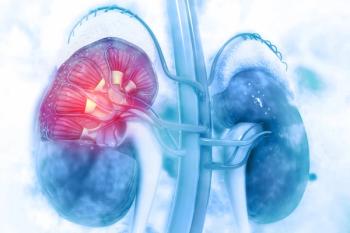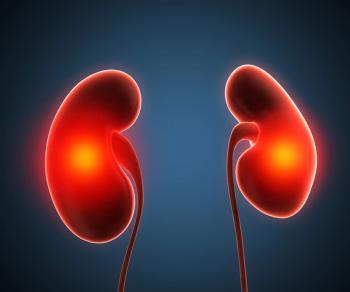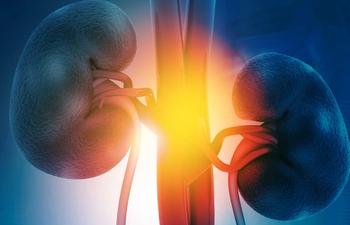
Chromophobe RCC and Papillary Kidney Cancer: Novel Treatment Strategies
A brief discussion centered on optimal treatment strategies for patients with chromophobe or papillary kidney cancers.
Episodes in this series

Transcript:
Brian I. Rini, MD, FASCO: Just to focus on chromophobe for a quick second, it sounds like all of you, if I’m interpreting correctly, are giving an IO [immuno-oncology] TKI [tyrosine kinase inhibitor] in frontline non–clear cell.... Are there any [patients with] chromophobe where you give everolimus up front?... Any of you? Moshe?
Moshe C. Ornstein, MD, MA: I know [they’re] limited data, but...there is something about mTOR TSC [tuberous sclerosis complex] when it comes to chromophobe. So if a patient doesn’t have a rapidly progressive disease where I’m not concerned that I won’t be able to give them...an IO-based regimen in the second line, I’ll still use lenvatinib/everolimus for advanced chromophobe.
Brian I. Rini, MD, FASCO:Betsy?
Elizabeth R. Plimack, MD, MS: I would just say I do sometimes use a single-agent TKI in chromophobe. There [is] a group of these patients who are so indolent that you really wait and wait and wait to start. And so, starting with 1 drug instead of 2, in some ways, just is logical. You’re trying to see how little you can give them to get stability or control. But I don’t disagree with anything that’s been said by my colleagues.
Brian I. Rini, MD, FASCO: Bob, anything to add about len [lenvatinib]/everolimus use?
Robert J. Motzer, MD: I have been using it in the first line for chromophobe. [These] data [are] making me think a little differently. My paradigm may be len/pembro [pembrolizumab], and then if patients progress, just single-agent everolimus or len/everolimus for patients who progress. But...I agree with Moshe...there’s something there with everolimus for chromophobe tumors. In randomized phase 2 drug trials of sunitinib vs everolimus, everolimus actually did better in that population.
Brian I. Rini, MD, FASCO: We know relatively little about the biology of chromophobe. We probably all agree to that. Let me ask 1 last question on non–clear cell before we move on to our last topic. We hear a lot about MET inhibition in papillary kidney cancer, cabo [cabozantinib] with some MET inhibition. There have been trials in MET-activated papillary [renal cell carcinoma]. There’s a drug called savolitinib, which is a MET inhibitor, now in large scale trials.... Do you think that papillary kidney cancer is specifically susceptible to MET inhibition? And do you think, say, savolitinib or [another] drug ultimately will find a home in papillary kidney cancer? Bob, I’ll start with you.
Robert J. Motzer, MD: I don’t think that’s been established, Brian. The single-agent MET inhibitors really didn’t show any activity and were dropped out of...[Sumanta Kumar] Pal, MD]’s large randomized phase 2 trial.... There is the SAMETA trial [NCT05043090] now that’s testing whether there’s MET positivity, there’s more activity for that particular compound or that particular compound plus IO. And so...that may give us an answer, but right now I don’t have an answer to that question. I don’t think it’s been fully established.
Brian I. Rini, MD, FASCO: Betsy, anything to add?
Elizabeth R. Plimack, MD, MS: No. I agree. That’s what we thought would be true, that MET inhibition was important. I don’t think that’s what the trials have shown. So we need to flex and try new drugs in these non–clear cell tumors.
Brian I. Rini, MD, FASCO:Yeah, I agree. We’ve been hearing about it for so long, but if it were obviously active, we wouldn’t be debating it. But that SAMETA trial that you mentioned—that was interesting with both savolitinib and durvalumab, I believe. So...hopefully that trial will accrue. That’s been the challenge, of course: accruing large, randomized trials in a relatively rare subtype. But...[it’s] important, and I totally agree with new targets....
Transcript is AI-generated and edited for clarity and readability.
Newsletter
Stay up to date on recent advances in the multidisciplinary approach to cancer.























































































